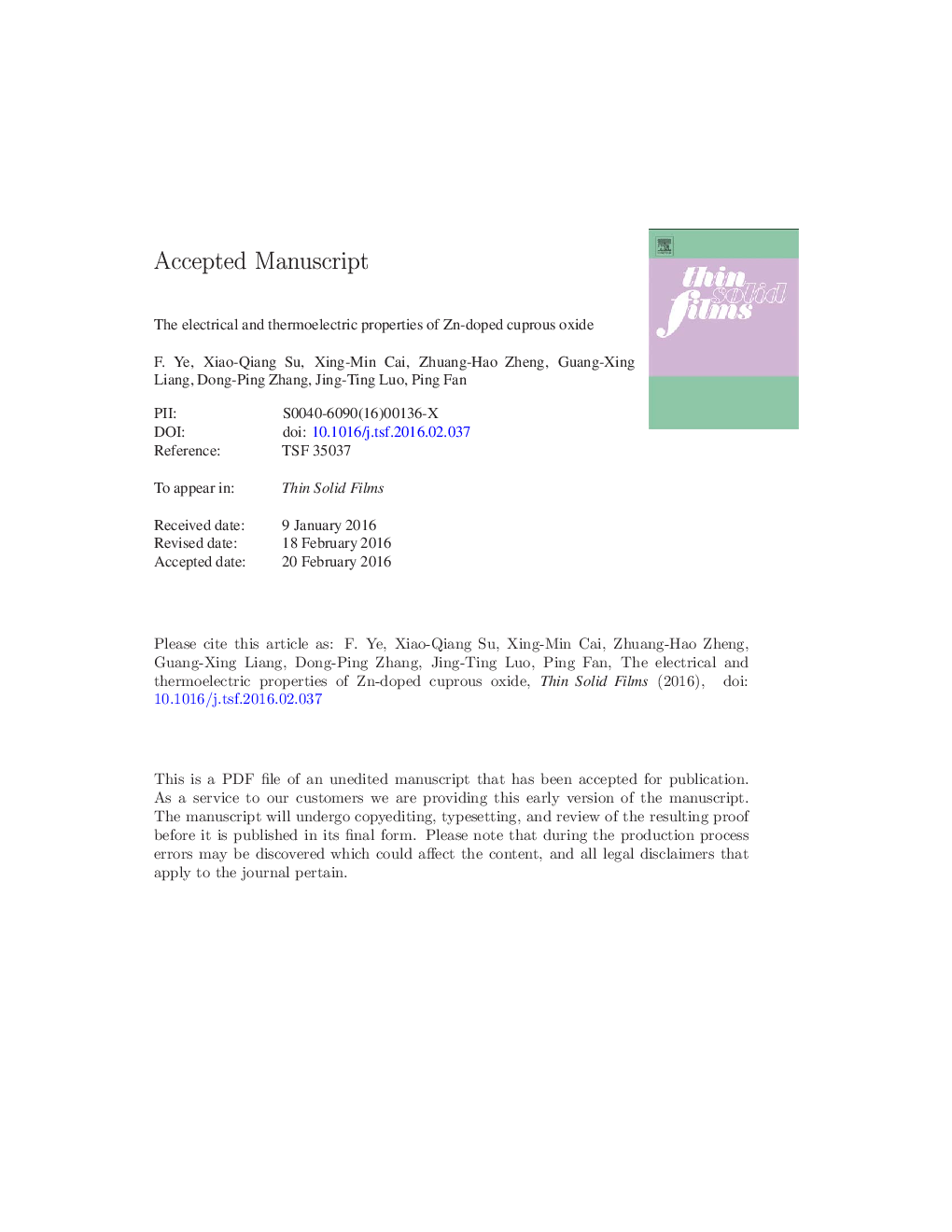| Article ID | Journal | Published Year | Pages | File Type |
|---|---|---|---|---|
| 8033672 | Thin Solid Films | 2016 | 26 Pages |
Abstract
Zn-doped cuprous oxide thin films were deposited by direct current magnetron co-sputtering. Pure phase thin films can be obtained when the power of the Zn target is relatively lower than that of the copper target while increasing the power of the Zn target will lead to the presence of impurities such as Cu or ZnO. Zn-doped samples have smaller lattice constants, compared with undoped cuprous oxide. Zn-doped cuprous oxide thin films without impurities have larger optical band gaps and a relatively higher transmission in longer wavelength. All the cuprous oxide thin films, whether doped or undoped, are p-type, as revealed by Hall effect measurements and the positive Seebeck coefficients. Zn-doped cuprous oxide thin films have a lower conductivity due to compensation than undoped Cu2O thin films. The Seebeck coefficient of all samples was found to decrease with the increase in the measurement temperature. Zn-doping does not have an obvious effect on the Seebeck coefficient. At temperatures slightly higher than room temperature, Zn-doped cuprous oxide thin films have relatively smaller power factors than undoped samples.
Related Topics
Physical Sciences and Engineering
Materials Science
Nanotechnology
Authors
F. Ye, Xiao-Qiang Su, Xing-Min Cai, Zhuang-Hao Zheng, Guang-Xing Liang, Dong-Ping Zhang, Jing-Ting Luo, Ping Fan,
